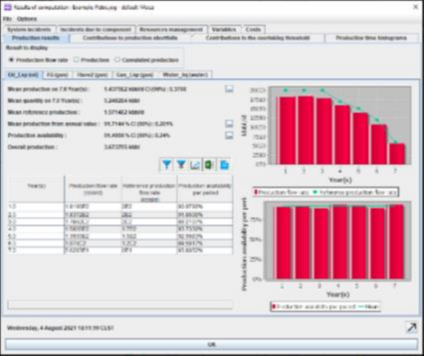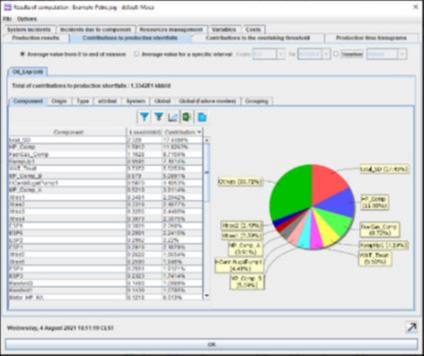GRIF | Petro - Evaluating the performance of dynamic multi-flow systems using stochastic block diagrams
About the Petro module

The Petro module is a decision-making tool for evaluating the production availability of your installations.
Petro is used to model and simulate multi-flow process systems in a number of industrial sectors (oil & gas, distribution, etc.) in order to calculate production availability. This decision-making tool can be used to optimize the design of a given unit by comparing the production availability of various architectures, in order to identify weak points and check that the targets defined for the system are being met. This module uses the MOCA-RP (for MOnte-CArlo - Petri nets) high-speed calculation engine, owned by TotalEnergies, as its names suggests, is based on the Monte-Carlo simulation and which is pushing the boundaries of modeling.
Benefits of the Petro module
User-friendly
and ergonomic
High-performance
calculation engine MOCA-RP
Compatible with
the HPC plug-in

GRIF is designed for any field of activity
Whether for an oil platform, aircraft, train or water supply system, GRIF evaluates the reliability and availability of any system using a range of computational techniques. The GRIF software suite offers a wide variety of calculation methods so that users can select the most appropriate (analytical, simulation, etc.), according to the system being modeled.
Minimum System Requirements
- Hardware requirement: Intel Core i3 or faster, 4 GB of free RAM, 1 GB of free space, no internet connection needed;
- Software requirements: Windows 10/11 or Linux or MacOS X with Java 11;
- Licences: standalone with USB dongle or floating licences with Sentinel server;
- Trial version available on our website.
Need more information?
The Petro module is part of the GRIF Simulation package

The Monte Carlo method for your dynamic models
The Simulation package allows the study of statistical results for thousands of stories in the form of convergence graphs, Petri nets or stochastic block diagrams, to map the most accurate events in even the most complex industrial environments. It is composed of four modules: Petri, BStoK, Petro and Flex. All of them are aquipped with Moca-RP (for MOnte-CArlo - Petri nets), a TotalEnergies proprietary ultra-fast calculation engine based, as its name suggests, on Monte-Carlo simulation and which pushes the limits of modeling.
About GRIF

Identify the essential indicators of your system analysis.
GRIF (GRaphical Interface for Reliability Forecasting) is a software suite designed to help engineers determine the key RAMS (Reliability - Availability - Maintainability - Safety) indicators. Drawing on TotalEnergies' experience in simulation research and development, it features mature, high-performance calculation engines and modeling capabilities to meet all your needs in any reliability study.




